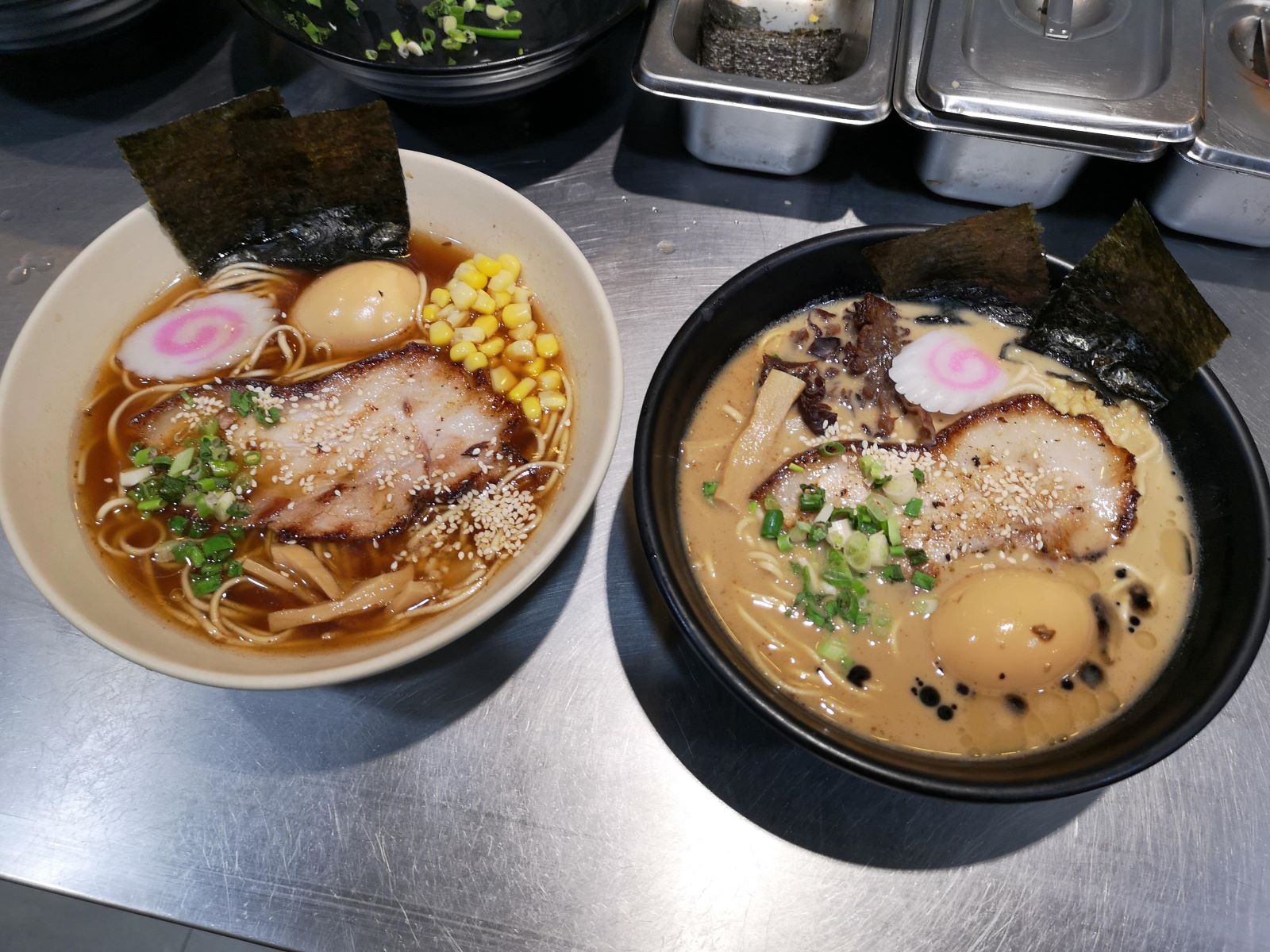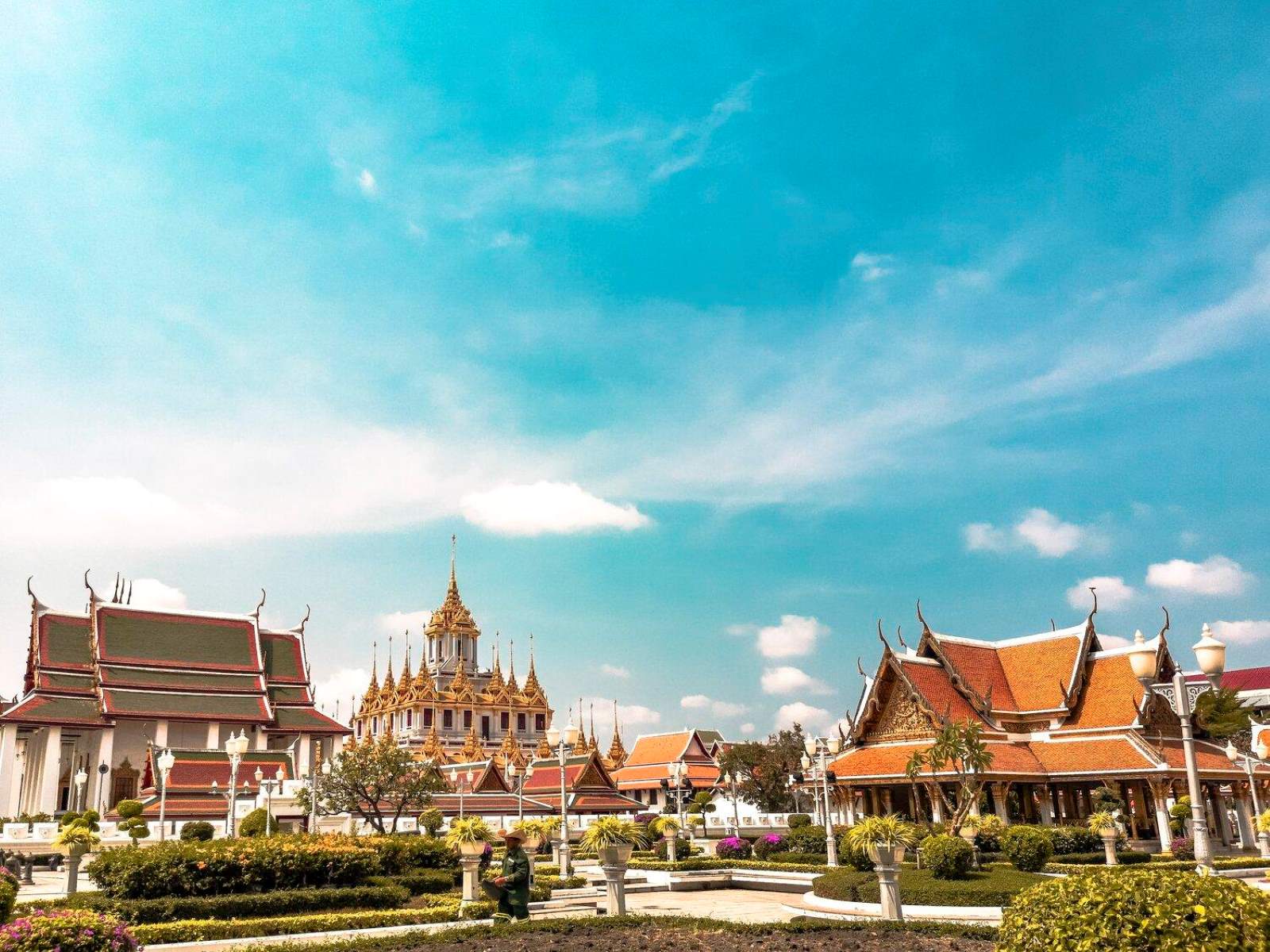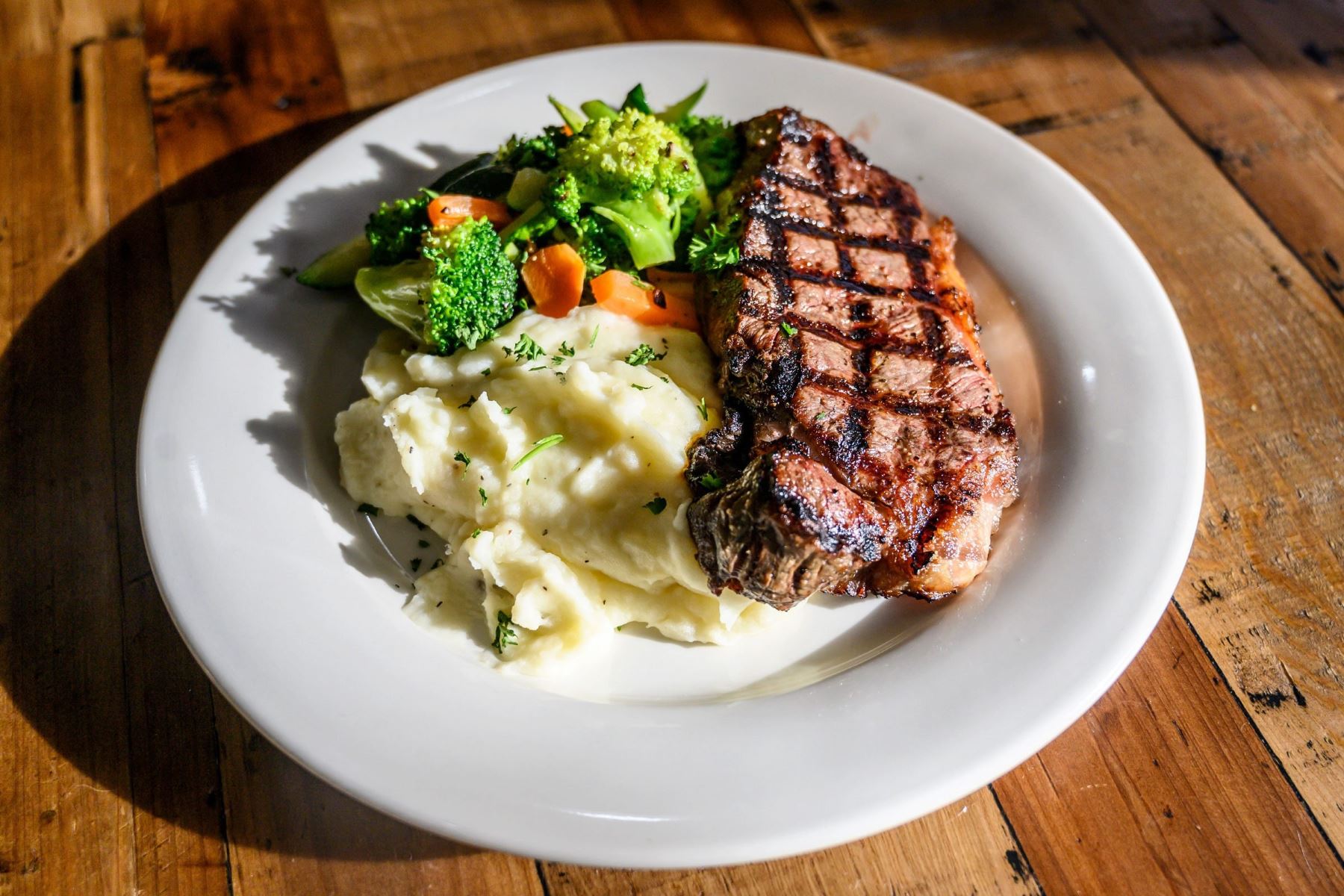Home>Food and Cooking>Japanese Sake Vs Korean Soju: The Ultimate Showdown! Which Is The Perfect Straight-Up Drink?


Food and Cooking
Japanese Sake Vs Korean Soju: The Ultimate Showdown! Which Is The Perfect Straight-Up Drink?
Published: January 28, 2024
Discover the ultimate showdown between Japanese Sake and Korean Soju! Find out which is the perfect straight-up drink for you. Explore more on Food and Cooking.
(Many of the links in this article redirect to a specific reviewed product. Your purchase of these products through affiliate links helps to generate commission for Regretless.com, at no extra cost. Learn more)
Table of Contents
Introduction
When it comes to Asian alcoholic beverages, two names stand out prominently: Japanese sake and Korean soju. Both have a rich cultural heritage and a devoted following, but they are distinct in their flavors, production processes, and cultural significance. In this ultimate showdown, we will delve into the nuances of Japanese sake and Korean soju to determine which one reigns supreme as the perfect straight-up drink.
Japanese sake and Korean soju are not just drinks; they are embodiments of the traditions and values of their respective cultures. Each has its own unique characteristics that appeal to different palates and occasions. By exploring the flavor profiles, production processes, alcohol content, serving and drinking customs, food pairings, and cultural significance of these iconic beverages, we aim to unravel the mystique surrounding Japanese sake and Korean soju. So, let's embark on this intriguing journey to discover the essence of these celebrated libations and find out which one emerges as the ultimate straight-up drink!
What is Japanese Sake?
Japanese sake, often referred to simply as sake, is a traditional Japanese alcoholic beverage with a history dating back over 2,000 years. It is a rice wine made through a brewing process that is distinct from that of grape-based wines or beers. Sake is deeply ingrained in Japanese culture and is an integral part of various ceremonies and social gatherings.
Sake is crafted from a few simple ingredients, primarily rice, water, yeast, and koji mold. The quality of the rice and water used in the brewing process significantly impacts the flavor and aroma of the final product. The rice undergoes a milling process to remove the outer layers, leaving behind the starchy core, which is essential for sake production.
The brewing process involves multiple steps, including rice polishing, washing, soaking, steaming, and fermenting. The fermentation of sake occurs in multiple stages, with precise temperature and environmental controls to ensure the development of desired flavors and aromas. The art of sake brewing requires a delicate balance of tradition, craftsmanship, and modern techniques.
The flavor profile of sake varies widely, ranging from light and floral to rich and complex, depending on factors such as the type of rice, water quality, yeast strains, and brewing methods. Sake can be categorized into different types based on its polishing ratio, aroma, sweetness, and acidity, offering a diverse range of options for enthusiasts to explore.
In Japanese culture, sake holds a special place in traditional ceremonies, such as weddings, New Year celebrations, and religious rituals. It is also a symbol of hospitality and camaraderie, often shared among friends and colleagues during social gatherings and business meetings. The etiquette of serving and drinking sake is steeped in customs and rituals that reflect the respect and reverence accorded to this revered beverage.
Overall, Japanese sake embodies a profound connection to Japanese heritage and craftsmanship, making it a revered and cherished libation that continues to captivate enthusiasts worldwide. Its rich history, intricate brewing process, and diverse flavor profiles contribute to its allure as a quintessential representation of Japanese culture and tradition.
What is Korean Soju?
Korean soju, often hailed as South Korea's national drink, is a clear, colorless distilled spirit with a history deeply rooted in Korean culture. It is a versatile and widely consumed alcoholic beverage that has evolved over centuries, adapting to the changing tastes and preferences of consumers.
Traditionally, soju was crafted from rice, but modern production methods often incorporate other starches such as barley, wheat, or sweet potatoes. The key to soju's distinctive flavor lies in the meticulous fermentation and distillation processes, which contribute to its smooth and clean taste profile.
The flavor of soju can vary from light and subtly sweet to bold and robust, offering a wide spectrum of options to suit different palates. Its alcohol content typically ranges from 16% to 25%, making it a potent yet approachable libation that can be enjoyed on various occasions.
One of the defining characteristics of soju is its adaptability as a standalone drink or a versatile ingredient in cocktails. Its neutral taste and relatively low price point have contributed to its widespread popularity, both in South Korea and internationally.
In Korean culture, soju holds a prominent place in social gatherings, where it serves as a symbol of camaraderie and conviviality. The tradition of sharing soju among friends and colleagues reflects the value placed on interpersonal connections and communal bonds in Korean society.
The serving and drinking customs associated with soju are steeped in tradition, with etiquettes that emphasize respect and consideration for others. From the proper way to pour and receive a glass of soju to the use of honorific language when toasting, these customs reflect the significance of soju in Korean social interactions.
Overall, Korean soju embodies the essence of Korean hospitality, resilience, and adaptability. Its evolution from a traditional rice-based spirit to a modern, versatile libation mirrors the dynamism of Korean culture and its ability to embrace change while preserving its heritage. Soju's enduring popularity and cultural significance make it an iconic representation of Korean identity and traditions.
Flavor Profile
Japanese sake offers a diverse and nuanced flavor profile that reflects the intricate artistry of its brewing process. The taste of sake can vary significantly based on factors such as the type of rice used, the quality of water, the brewing techniques, and the specific yeast strains employed. These variables contribute to the creation of a wide spectrum of flavor profiles, ranging from delicate and floral to robust and complex.
One of the defining characteristics of sake is its ability to convey the essence of the ingredients and the craftsmanship involved in its production. In the case of junmai (pure rice) sake, the flavor profile tends to be rich and full-bodied, with pronounced rice-derived aromas and a slightly acidic edge. On the other hand, ginjo sake, which undergoes a more extensive milling process, often exhibits a lighter and more fragrant profile, with subtle fruity and floral notes that result from the delicate fermentation process.
Furthermore, the presence of umami, the fifth basic taste, is a hallmark of many premium sake varieties. This savory undertone adds depth and complexity to the flavor profile, creating a harmonious balance that enhances the overall drinking experience. Additionally, the classification of sake based on sweetness levels, such as dry (karakuchi) or sweet (amakuchi), further expands the range of flavor options available to enthusiasts.
In contrast, Korean soju is known for its smooth and clean taste, characterized by a subtle sweetness and a gentle warmth that lingers on the palate. The flavor profile of soju can be influenced by the choice of raw materials, the distillation process, and any additional flavorings or infusions. Traditional rice-based soju often exudes a mild sweetness with delicate herbal undertones, while modern variants, incorporating diverse grains, may offer a more nuanced and layered taste experience.
The adaptability of soju as a standalone drink or a versatile cocktail ingredient is attributed to its neutral flavor profile, making it a popular choice for mixing with various flavors and infusions. Whether enjoyed neat, on the rocks, or as a base for creative cocktails, soju's subtle and approachable taste profile appeals to a broad audience, contributing to its widespread acclaim and consumption.
In essence, the flavor profiles of Japanese sake and Korean soju encapsulate the distinct characteristics and cultural influences of these iconic beverages, offering enthusiasts a rich tapestry of tastes to explore and savor. Each sip unveils a story of tradition, craftsmanship, and sensory delight, inviting enthusiasts to immerse themselves in the captivating world of Asian libations.
Production Process
Japanese sake production is a meticulous and time-honored process that reflects the deep-rooted traditions and craftsmanship associated with this revered libation. The journey of creating sake begins with the careful selection of high-quality rice, which serves as the fundamental building block of the beverage. The rice grains are polished to remove the outer layers, a crucial step that impacts the purity and flavor profile of the final product. The degree of rice polishing directly correlates to the quality and classification of the sake, with higher polishing ratios yielding more refined and premium varieties.
Once the polished rice is prepared, it undergoes a precise and multi-stage brewing process that requires expertise and attention to detail. The rice is washed, soaked, and steamed to achieve the ideal texture and consistency for fermentation. Koji mold, a vital component in sake production, is introduced to the steamed rice, initiating the saccharification process where the starches in the rice are converted into fermentable sugars.
Subsequently, yeast is added to the koji-infused rice to initiate the fermentation process, leading to the transformation of sugars into alcohol. The fermentation occurs in multiple stages, each carefully monitored to maintain optimal conditions for the development of complex flavors and aromas. The duration and temperature of fermentation play a crucial role in shaping the final character of the sake, with variations in these parameters resulting in diverse taste profiles.
After the fermentation process is complete, the sake undergoes pressing to separate the liquid from the remaining solids, yielding a clear, refined beverage ready for further maturation or immediate consumption. The freshly pressed sake may undergo additional aging to enhance its flavors and mellow its characteristics, contributing to the depth and complexity of the final product.
On the other hand, the production process of Korean soju involves distillation, a method that sets it apart from the brewing techniques employed in sake production. Traditionally, soju was distilled from rice, but modern variations may incorporate other grains such as barley, wheat, or sweet potatoes. The raw materials undergo fermentation to produce a low-alcohol base, which is then distilled to increase its alcohol content and purity.
The distillation process plays a pivotal role in refining the taste and texture of soju, resulting in a smooth and clean spirit with a subtle sweetness and gentle warmth. The distilled soju is often diluted to achieve the desired alcohol content, typically ranging from 16% to 25%, making it a versatile and approachable libation suitable for various consumption preferences.
In summary, the production processes of Japanese sake and Korean soju exemplify the artistry and dedication involved in creating these iconic beverages. Whether through the intricate brewing techniques of sake or the meticulous distillation methods of soju, each step in the production journey contributes to the distinctiveness and allure of these celebrated libations.
Alcohol Content
The alcohol content of a beverage plays a significant role in shaping its character, potency, and overall drinking experience. In the context of Japanese sake and Korean soju, understanding the alcohol content provides valuable insights into the versatility, consumption preferences, and cultural significance of these iconic libations.
Japanese sake typically exhibits a moderate alcohol content, ranging from 15% to 20% by volume. This balanced potency allows sake to be enjoyed in various settings, whether as a standalone drink or as an accompaniment to a wide array of culinary delights. The harmonious interplay of alcohol content with the intricate flavors and aromas of sake contributes to its reputation as a versatile and sociable beverage. Sake enthusiasts appreciate its ability to complement diverse cuisines and elevate the dining experience without overwhelming the palate with excessive alcohol intensity.
On the other hand, Korean soju is known for its relatively higher alcohol content, typically ranging from 16% to 25% by volume. This elevated potency lends soju its characteristic warmth and robustness, making it a popular choice for those seeking a more pronounced alcoholic kick. Despite its higher alcohol content, soju maintains a smooth and approachable profile, allowing it to be enjoyed neat, on the rocks, or as a key component in creative cocktails. The diverse alcohol content options within the soju category cater to a broad spectrum of preferences, ensuring that enthusiasts can find a suitable variant that aligns with their desired drinking experience.
The contrast in alcohol content between Japanese sake and Korean soju reflects the nuanced preferences and cultural contexts in which these beverages are enjoyed. Sake's moderate alcohol content aligns with its role as a versatile and convivial drink deeply intertwined with Japanese culinary traditions and social customs. In contrast, soju's higher alcohol content mirrors its position as a robust and adaptable spirit that holds a central place in Korean social interactions and contemporary mixology trends.
In essence, the alcohol content of Japanese sake and Korean soju serves as a defining characteristic that shapes their consumption dynamics, culinary pairings, and cultural significance. Whether savoring the balanced elegance of sake or embracing the bold warmth of soju, enthusiasts can appreciate the diverse alcohol content profiles that contribute to the enduring allure of these beloved Asian libations.
Serving and Drinking
The serving and drinking customs associated with Japanese sake and Korean soju are steeped in tradition and reflect the cultural significance and social dynamics of these iconic beverages. Each libation has distinct etiquettes and rituals that enhance the overall drinking experience and contribute to the sense of camaraderie and conviviality associated with their consumption.
In the case of Japanese sake, the traditional serving vessel, known as a tokkuri, and the small cups, called sakazuki or ochoko, play a vital role in the presentation and enjoyment of sake. The act of pouring sake is regarded as an art form, with emphasis placed on grace, precision, and respect. When serving sake to others, it is customary to hold the tokkuri with one hand and support the base with the other, ensuring a steady and controlled pour. The recipient of the sake should hold their cup with both hands as a gesture of appreciation and receive the pour with a slight bow. This exchange embodies the spirit of hospitality and mutual respect, creating a moment of shared connection and gratitude.
The act of drinking sake is often accompanied by expressions of appreciation for the craftsmanship and dedication that went into its production. It is customary to savor the aroma of the sake before taking a sip, allowing the senses to fully immerse in the nuances of the beverage. The first sip is often enjoyed in silence, allowing the drinker to experience the initial impressions of the sake without distraction. Subsequent sips can be savored while engaging in conversation, fostering a sense of camaraderie and shared enjoyment.
In the realm of Korean soju, the traditional serving and drinking customs reflect the values of respect, generosity, and communal harmony. Soju is typically served in small shot glasses, emphasizing the importance of moderation and shared experiences. When pouring soju for others, it is customary to use both hands as a sign of reverence and consideration. The act of offering soju to friends or elders is accompanied by polite gestures and expressions of goodwill, underscoring the significance of interpersonal relationships and social harmony.
The drinking of soju often involves communal toasts, known as geonbae, where participants raise their glasses and offer well-wishes or expressions of gratitude. The tradition of using honorific language and maintaining eye contact during toasts reflects the cultural emphasis on respect and mutual appreciation. These moments of shared celebration and connection contribute to the convivial atmosphere surrounding the consumption of soju, fostering a sense of unity and warmth among participants.
In essence, the serving and drinking customs of Japanese sake and Korean soju embody the values of respect, hospitality, and shared enjoyment that are integral to their respective cultures. Whether partaking in the elegant rituals of sake service or engaging in the communal traditions of soju toasting, enthusiasts are invited to embrace the rich tapestry of customs and courtesies that elevate the act of drinking these iconic Asian libations.
Food Pairing
The art of food pairing with Japanese sake and Korean soju transcends mere culinary combinations; it is a harmonious symphony of flavors, textures, and cultural nuances. Both beverages offer a myriad of possibilities for enhancing dining experiences, elevating the aromas and tastes of diverse cuisines, and creating moments of sensory delight.
Japanese sake, with its diverse flavor profiles and nuanced characteristics, serves as a versatile companion to a wide range of culinary creations. Its ability to complement, contrast, or cleanse the palate makes it a beloved choice for food pairing enthusiasts. Light and floral sake variants, such as ginjo or daiginjo, harmonize beautifully with delicate sashimi, sushi, and other seafood dishes, accentuating the freshness and subtleties of the ocean's bounty. The umami-rich nature of sake also makes it an excellent match for grilled meats, tempura, and savory dishes, where it enhances the savory notes and balances the overall flavor profile. Additionally, the gentle acidity and clean finish of certain sake types make them ideal companions for creamy cheeses, light desserts, and fruit-based confections, creating a sensorial journey that unfolds with each sip and bite.
Korean soju, with its smooth and clean taste, offers a complementary approach to food pairing, allowing it to seamlessly integrate with a diverse array of cuisines. Its subtle sweetness and gentle warmth make it a versatile partner for savory and spicy dishes, particularly in Korean cuisine. Soju's neutral flavor profile enables it to accentuate the bold flavors of grilled meats, spicy stews, and pickled vegetables, creating a balanced interplay of tastes that lingers on the palate. Furthermore, soju's adaptability as a cocktail ingredient opens up a world of possibilities for pairing with fusion dishes, international cuisines, and inventive culinary creations. Whether incorporated into refreshing fruit-based cocktails or innovative soju-infused concoctions, the beverage's flexibility adds a layer of creativity and exploration to the dining experience.
In essence, the art of food pairing with Japanese sake and Korean soju is an invitation to embark on a sensory odyssey, where the interplay of flavors, textures, and cultural influences converges to create moments of culinary enchantment. Whether savoring the delicate nuances of sake alongside Japanese delicacies or exploring the versatile companionship of soju with diverse cuisines, enthusiasts are presented with a tapestry of possibilities that celebrate the union of libations and gastronomic delights.
Popularity and Cultural Significance
Japanese sake and Korean soju hold profound cultural significance and enjoy widespread popularity within their respective cultural domains. The cultural significance of these iconic beverages extends far beyond their flavors and consumption patterns, encompassing traditions, rituals, and historical legacies that have shaped the social fabric of Japan and South Korea.
Japanese sake, deeply ingrained in the cultural tapestry of Japan, embodies a rich heritage that reflects the nation's reverence for craftsmanship, tradition, and hospitality. Sake has been an integral part of Japanese rituals, ceremonies, and social gatherings for centuries, symbolizing purity, harmony, and connection. The reverence for sake is evident in the intricate rituals of serving and drinking, where each gesture and expression carries deep cultural meaning. The beverage's association with traditional ceremonies, such as weddings, Shinto rituals, and seasonal festivals, underscores its role as a conduit for spiritual and communal experiences.
Furthermore, the global appeal of Japanese sake has elevated its cultural significance on the international stage, serving as an ambassador for Japanese culinary traditions and artisanal expertise. Sake breweries, known as kura, have become cultural landmarks, drawing enthusiasts and connoisseurs seeking to immerse themselves in the timeless art of sake production. The designation of certain sake varieties as cultural assets and the celebration of sake festivals, such as the famous "nihonshu no hi" (Sake Day), highlight the enduring legacy and cultural resonance of this revered libation.
In the realm of Korean culture, soju holds a distinct position as a symbol of conviviality, camaraderie, and shared experiences. Its popularity transcends generations, with soju serving as a common thread that connects individuals from diverse backgrounds. The tradition of sharing soju among friends, colleagues, and family members reflects the value placed on interpersonal relationships and communal bonds in Korean society. Soju's presence in social gatherings, celebratory events, and everyday interactions underscores its role as a catalyst for fostering connections and creating moments of shared joy.
Moreover, the cultural significance of soju extends to its portrayal in literature, music, and popular culture, where it serves as a cultural emblem that resonates with the sentiments and aspirations of the Korean people. The enduring appeal of soju as a versatile and accessible libation has solidified its place as an iconic representation of Korean identity and conviviality, transcending geographical boundaries and captivating global audiences.
In essence, the popularity and cultural significance of Japanese sake and Korean soju reflect the enduring legacies and societal roles of these iconic beverages. Their ability to encapsulate the values, traditions, and collective experiences of their respective cultures underscores their timeless appeal and enduring relevance in the modern world.
Conclusion
In the ultimate showdown between Japanese sake and Korean soju, we have delved into the intricate nuances of these iconic libations, exploring their flavor profiles, production processes, cultural significance, and culinary companionships. Japanese sake, with its rich heritage, diverse flavor profiles, and profound cultural resonance, stands as a testament to Japan's reverence for tradition, craftsmanship, and communal harmony. Its association with traditional ceremonies, global appeal, and timeless rituals of serving and drinking reflects its enduring legacy as a quintessential representation of Japanese culture and artisanal expertise.
On the other hand, Korean soju, celebrated for its smooth taste, versatile nature, and convivial spirit, embodies the warmth, resilience, and shared connections that define Korean hospitality and camaraderie. Its widespread popularity, cultural symbolism, and adaptability as a social lubricant and culinary companion underscore its role as a cultural emblem that transcends borders and resonates with diverse audiences.
As we conclude this exploration, it becomes evident that the ultimate straight-up drink is not merely a matter of preference or potency but a reflection of the values, traditions, and collective experiences that these iconic beverages encapsulate. Japanese sake and Korean soju offer enthusiasts a captivating journey through the cultural landscapes of Japan and South Korea, inviting them to embrace the timeless rituals, sensory delights, and convivial moments that define the art of imbibing.
Whether savoring the delicate nuances of sake alongside Japanese delicacies or raising a toast with soju in the company of friends, the enduring appeal of these libations lies in their ability to transcend the realms of taste and aroma, offering glimpses into the soul and spirit of their respective cultures. Japanese sake and Korean soju stand as ambassadors of tradition, conviviality, and shared experiences, inviting enthusiasts to partake in the timeless art of libation and cultural celebration.
In the end, the ultimate showdown between Japanese sake and Korean soju reveals not a victor or vanquished but a celebration of cultural diversity, culinary artistry, and the enduring legacy of two iconic libations that continue to captivate hearts, minds, and palates around the world.













